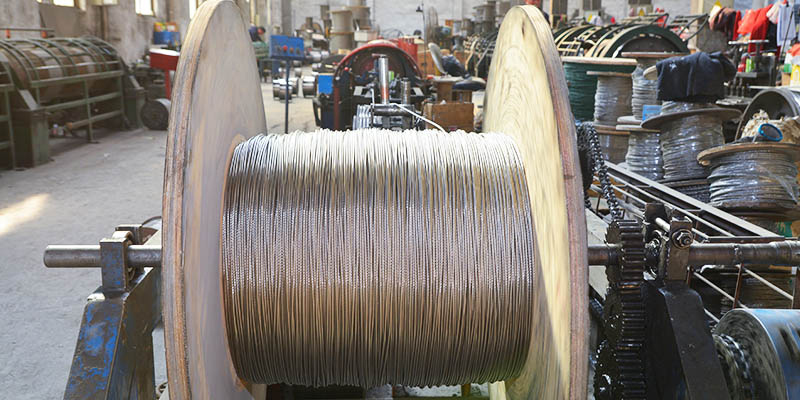1×7 Stainless Steel Wire Rope Product Introduction Overview: The 1×7 stainless steel wire rope is a high-quality, durable, and versatile wire rope constructed from a single strand of seven individual ...
See DetailsIn the field of modern industry and construction, rigging hardware is an indispensable and important part. It not only ensures the safety and efficiency of lifting operations, but also directly affects the progress of the project and the safety of personnel.
Rigging hardware refers to a collection of hardware accessories used for lifting, pulling, fixing or adjusting the position of heavy objects. They are usually made of high-strength steel and have good wear resistance and load-bearing capacity. Common rigging hardware includes shackles, lifting rings, rigging hooks, wire rope clamps, pulley blocks, etc.
These hardware parts are combined with ropes or chains to form a complete rigging system, which is widely used in shipbuilding, bridge construction, port loading and unloading, heavy machinery maintenance and other fields.
Core types and functions of rigging hardware
In actual use, different types of rigging hardware undertake different tasks.
Shackles
Shackles are an important link connecting the various parts of the rigging system, and are often used to connect hooks with slings and chains. Its design requires high load-bearing strength and can withstand complex force directions.
Eyebolts
Eyebolts are used to fix the sling to the equipment or structure, and are the mounting points for lifting. Depending on the use environment, there are two types: threaded eyebolts and welded eyebolts.
Blocks and Pulleys
Blocks and Pulleys improve lifting efficiency by changing the direction and magnitude of force. High-quality pulleys can significantly reduce the labor intensity of operators.
Wire Rope Clips
Used for connecting and fixing wire ropes, they are indispensable safety accessories in wire rope rigging.

Material and Manufacturing Process of Rigging Hardware
Safety performance is the lifeline of rigging hardware. Alloy steel and carbon steel are usually used in manufacturing, and heat treatment and surface treatment are used to enhance wear resistance and corrosion resistance. Common surface treatment processes include galvanizing, electroplating and spraying, the purpose of which is to extend the service life of hardware and avoid rust and damage in harsh environments.
Precise forging technology and strict quality control standards ensure the strength and stability of hardware. For example, the manufacture of shackles needs to pass nondestructive testing and tensile tests to ensure that each component can meet the rated load requirements.
Safety specifications and testing of rigging hardware
The safety specifications of rigging hardware are mainly formulated in accordance with international standards (such as ISO, ASME) and relevant industry standards of various countries. These specifications cover the entire process of materials, design, testing, use and maintenance to ensure the safety and reliability of lifting operations.
Before use, visual inspection and regular inspection must be carried out. If deformation, cracks or corrosion are found, they should be replaced immediately. Overloading, impact loads and improper operation should be avoided during use.
Key considerations for purchasing rigging hardware
When choosing suitable rigging hardware, comprehensive considerations should be made from the following aspects:
Carrying capacity
The rated load of the hardware must meet the maximum load requirements of the lifting conditions, leaving a safety factor.
Material and anti-corrosion performance
Choose appropriate materials and surface treatment according to the working environment. Products with strong anti-corrosion performance should be preferred in marine or chemical environments.

Structural design
High-quality design can improve efficiency and safety, such as the rolling smoothness of the pulley and the locking mechanism of the shackle.
Brand and Certification
When purchasing, give priority to brands with industry certification and quality assurance to ensure that the products meet safety regulations.
As the key hardware of industrial lifting and rigging systems, Rigging hardware bears the important responsibility of ensuring the safety and efficiency of lifting. Correctly understanding its classification, materials, manufacturing processes and safety regulations is crucial to the smooth progress of engineering projects. In the future, with the advancement of technology and the improvement of standards, rigging hardware will become more intelligent and efficient, injecting new impetus into industrial development.
